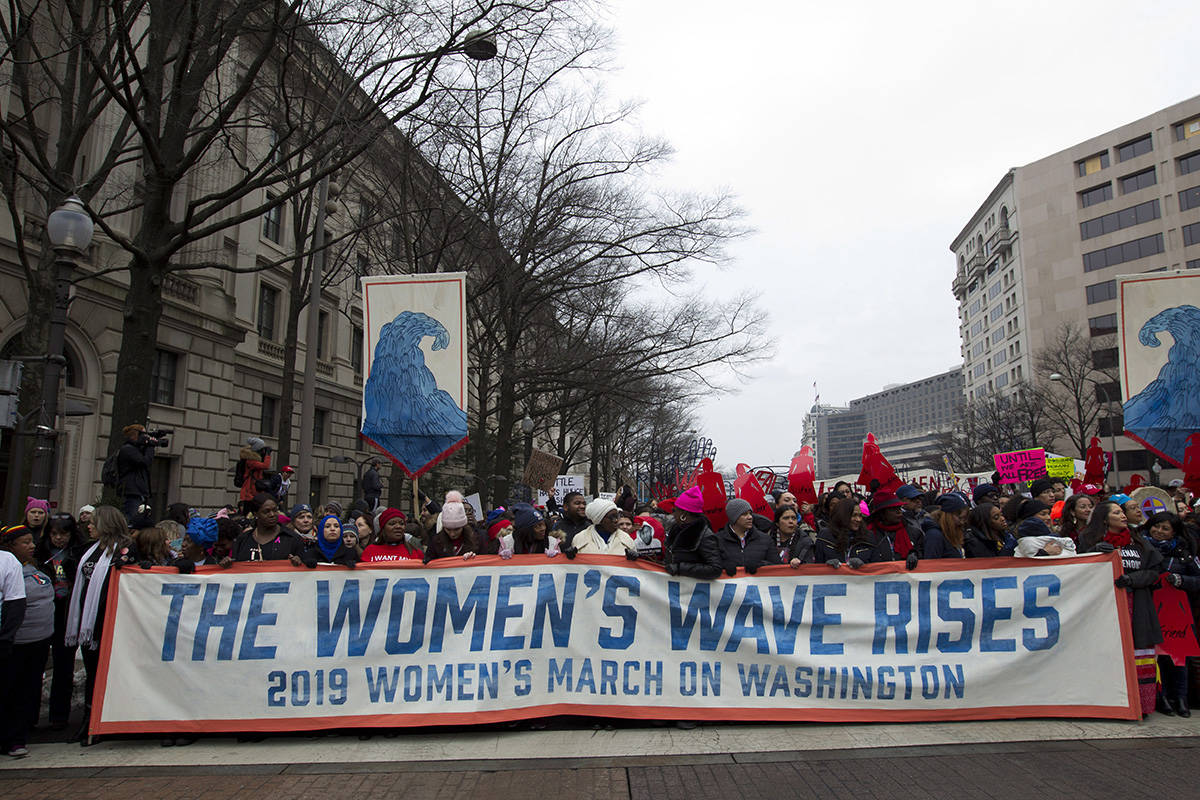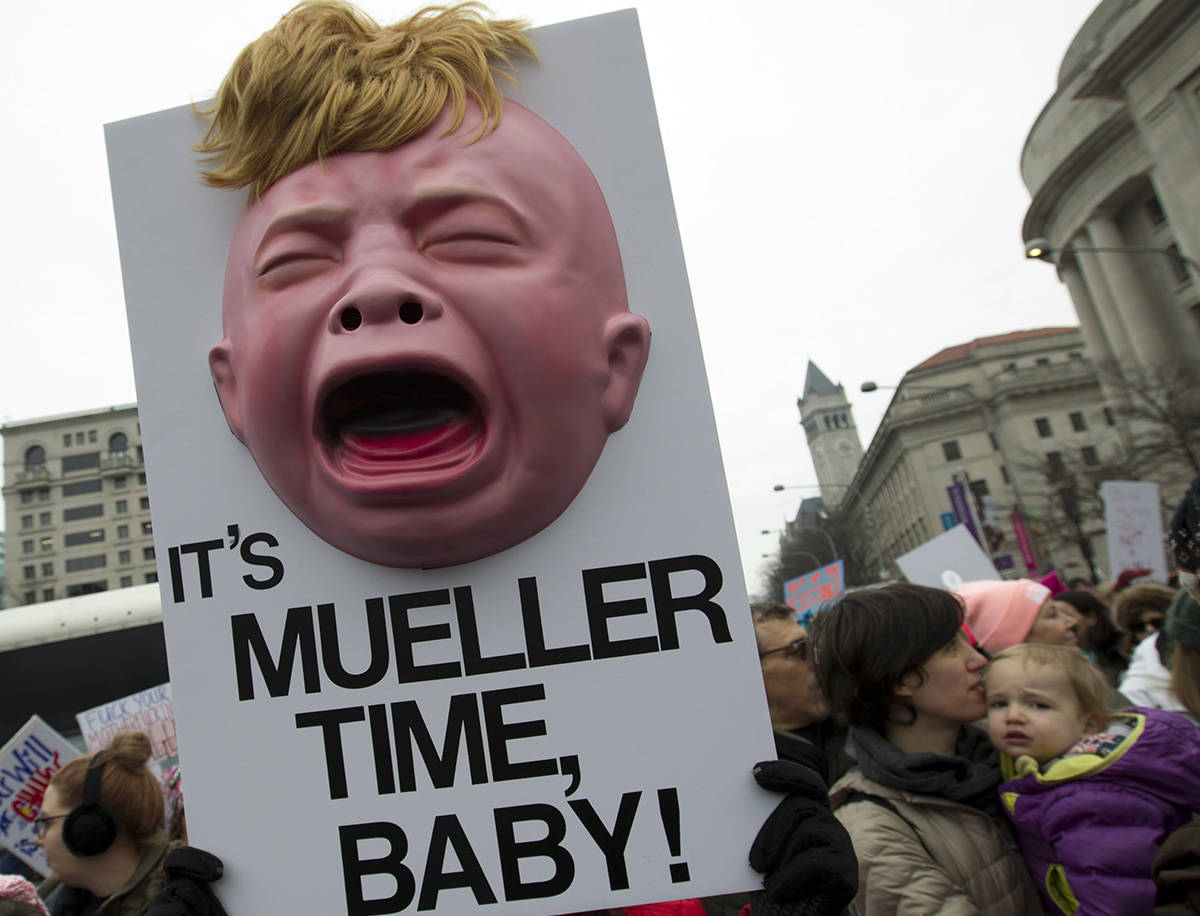The Women’s March was returning to Washington on Saturday, bracing for inclement weather, coping with an ideological split and reconfiguring its route due to the government shutdown.
The original march in 2017, the day after President Donald Trump’s inauguration, drew hundreds of thousands of people. The exact size of the turnout remains subject to a politically charged debate, but it’s generally regarded as the largest Washington protest since the Vietnam era.
Organizer this year submitted a permit application estimating that up to 500,000 people would participate, but the actual turnout was expected to be far lower. Parallel marches were planned in dozens of U.S. cities, as well as in B.C. and Alberta.
The original plan called for participants to gather on the National Mall. But with the forecast calling for snow and freezing rain and the National Park Service no longer plowing the snow, organizers changed the march’s location and route to start at Freedom Plaza, a few blocks from the White House, and head down Pennsylvania Avenue past the Trump International Hotel.
This year’s march has been roiled by an intense ideological debate.
Our movement moves to the rhythm of justice, equality and freedom for ALL WOMEN! @BatalaDC #WomensMarch2019 #WomensWave pic.twitter.com/2WNhzJ2wEb
— Women's March (@womensmarch) January 19, 2019
Fight like a girl ✊🏽✊🏽 #womensmarchlondon #breadandroses #WomensMarch2019 pic.twitter.com/buxfNOhhtC
— Miriam Rhys 🌺🦄 (@dowlaiscoconut) January 19, 2019
The #WomensWave hits #NYC! The #WomensUnityRally kicks off! #WomensMarch2019 pic.twitter.com/xYS347jBBN
— Murad Awawdeh (@HeyItsMurad) January 19, 2019
In November, Teresa Shook, one of the movement’s founders, accused the four main leaders of the national march organization of anti-Semitism. The accusation was levelled at two primary leaders: Linda Sarsour, a Palestinian-American who has criticized Israeli policy, and Tamika Mallory, who has maintained an association with Nation of Islam leader Louis Farrakhan.
Shook, a retired lawyer from Hawaii, has been credited with sparking the movement by creating a Facebook event that went viral and snowballed into the massive protest on Jan. 21, 2017. In a Facebook post, she claimed Sarsour and Mallory, along with fellow organizers Bob Bland and Carmen Perez, had “steered the Movement away from its true course” and called for all four to step down.
The four march organizers have denied the charge, but Sarsour has publicly expressed regret that they were not “faster and clearer in helping people understand our values.”
Despite pleas for unity, an alternate women’s march has sprung up in protest and planned a parallel rally in New York on Saturday a few blocks away from the official New York Women’s March protest.
Ashraf Khalil, The Associated Press
Like us on Facebook and follow us on Twitter.




